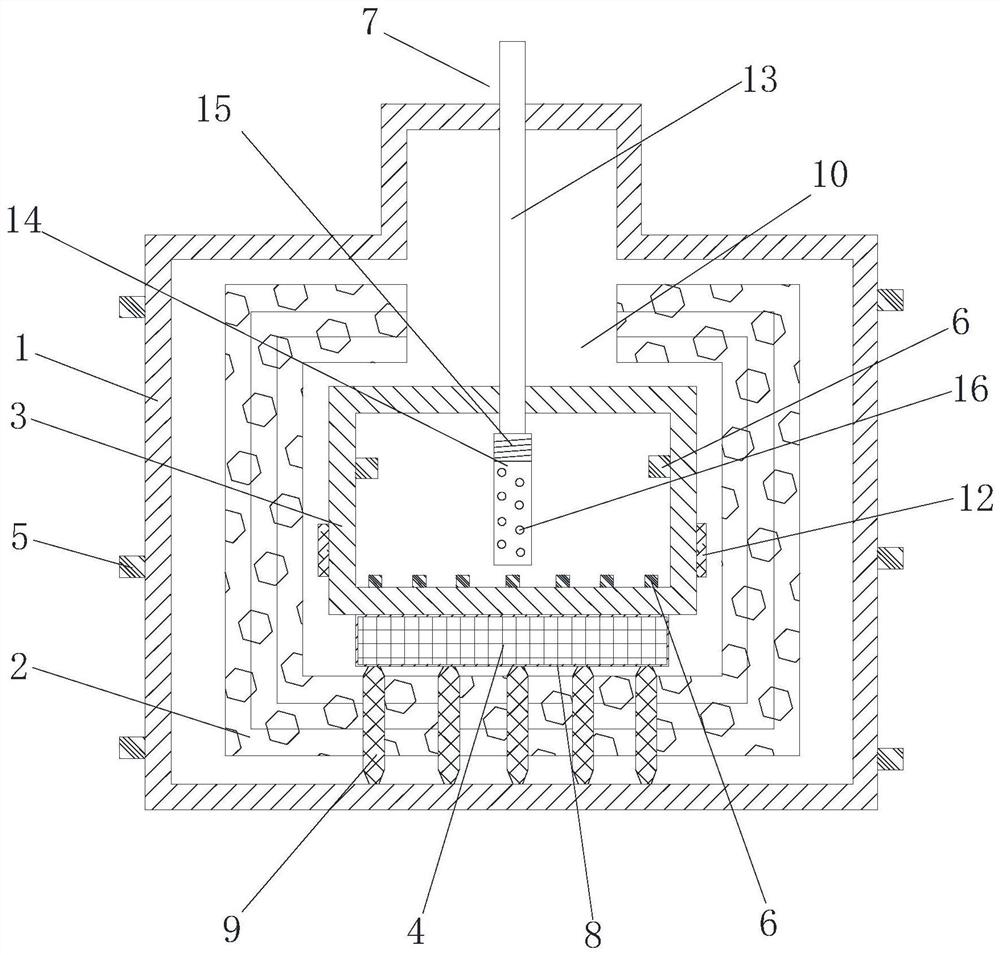Dewar for superconducting magnetic levitation
A magnetic levitation and superconducting magnet technology, applied in the superconducting field, can solve the problems of breaking the vacuum, poor economy, and large fluid loss, etc., and achieve the effect of reducing the distance between intervals, improving thermal insulation performance, and reducing fluid loss
- Summary
- Abstract
- Description
- Claims
- Application Information
AI Technical Summary
Problems solved by technology
Method used
Image
Examples
Embodiment Construction
[0020] The present invention will be further described below in conjunction with the accompanying drawings and embodiments. It should be noted that in the description of the present invention, the terms "upper", "lower", "left", "right", "inner", "outer" etc. The indicated orientation or positional relationship is based on the orientation or positional relationship shown in the drawings, and is only for the convenience of describing the present invention and simplifying the description, rather than indicating or implying that the referred device or element must have a specific orientation or in a specific way construction and operation, therefore, should not be construed as limiting the invention. The terms "first", "second", "third", etc. are used for descriptive purposes only and should not be construed as indicating or implying relative importance.
[0021] Such as figure 1 As shown, a Dewar used for superconducting magnetic levitation includes an outer casing 1, a multila...
PUM
 Login to View More
Login to View More Abstract
Description
Claims
Application Information
 Login to View More
Login to View More - R&D
- Intellectual Property
- Life Sciences
- Materials
- Tech Scout
- Unparalleled Data Quality
- Higher Quality Content
- 60% Fewer Hallucinations
Browse by: Latest US Patents, China's latest patents, Technical Efficacy Thesaurus, Application Domain, Technology Topic, Popular Technical Reports.
© 2025 PatSnap. All rights reserved.Legal|Privacy policy|Modern Slavery Act Transparency Statement|Sitemap|About US| Contact US: help@patsnap.com

